Abstract
The symbiotic potential of Bradyrhizobium japonicum isolates indigenous to seven Korean soils was evaluated by inoculating soybeans with 10- and 1,000-fold-diluted soil suspensions (whole-soil inocula). At both levels, significant differences in the symbiotic potential of the indigenous B. japonicum isolates were demonstrated. The relationship between rhizobial numbers in the whole-soil inocula (x) and nitrogen fixation parameters (y) was best predicted by a straight line (y = a + bx) when the numbers in the inocula were 100 to 10,000 ml-1, while the power curve (y = axb) predicted the variation when the numbers were 1 to 100 ml-1. Thirty isolates from three soils showed wide differences in effectiveness (measured as milligrams of shoot N per plant), and several were of equal or greater effectiveness than reference strain B. japonicum USDA 110 on soybean cultivars Clark and Jangbaekkong. On both of the soybean cultivars grown in a Hawaiian mollisol, the Korean B. japonicum isolate YCK 213 and USDA 110 were of equal effectiveness; USDA 110 was the superior strain in colonization (nodule occupancy). Korean isolates YCK 117 and YCK 141 were superior colonizers compared with USDA 110. However, B. japonicum USDA 123 was the superior colonizer compared with isolates YCK 213, YCK 141, and YCK 117. In an immunoblot analysis of 97 indigenous Korean isolates of B. japonicum, 41% fell into the USDA 110 and USDA 123 serogroups. Serogroups USDA 110 and USDA 123 were represented in six of the seven soils examined. In one Korean soil, 100% of the B. japonicum isolates reacted only with antisera of YCK 117, an isolate from the same soil.
Full text
PDF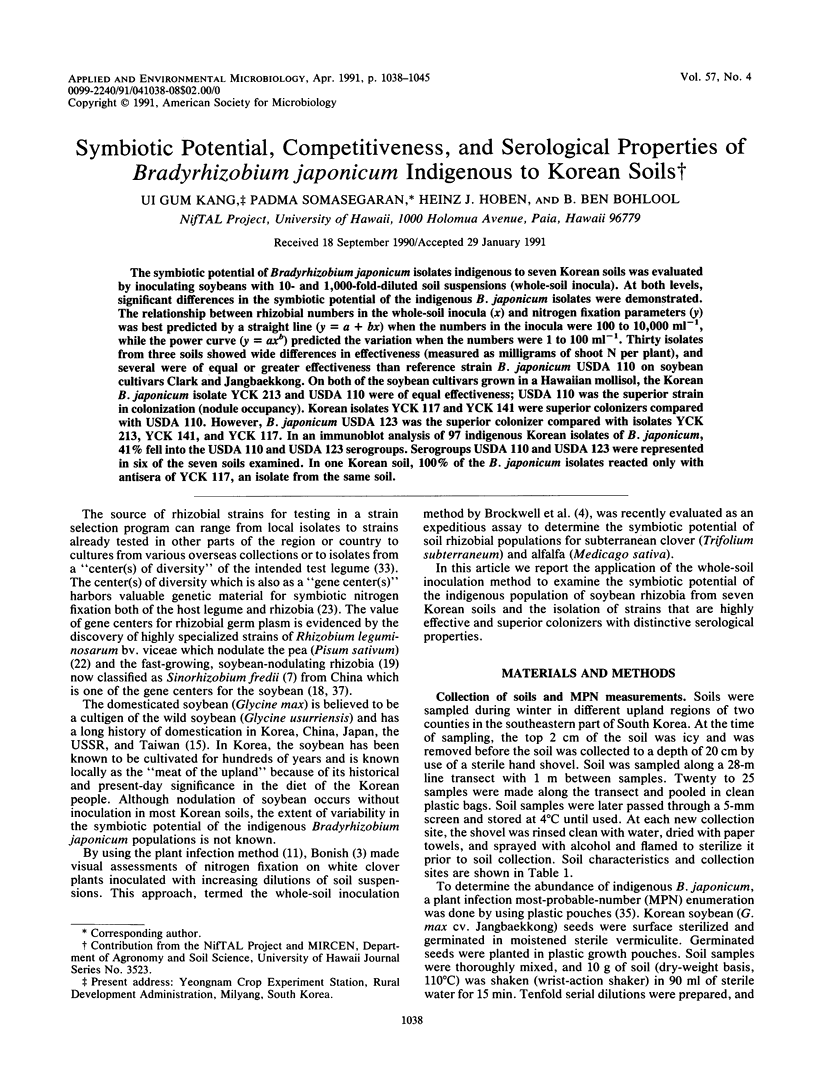
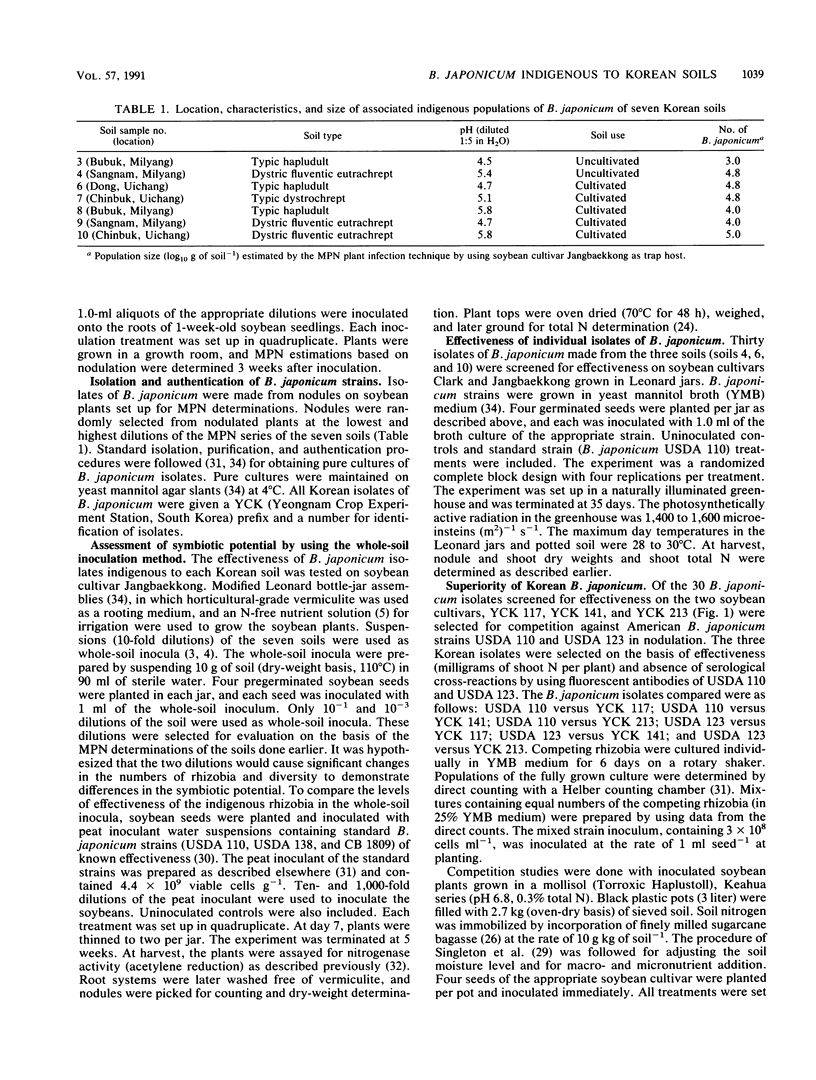
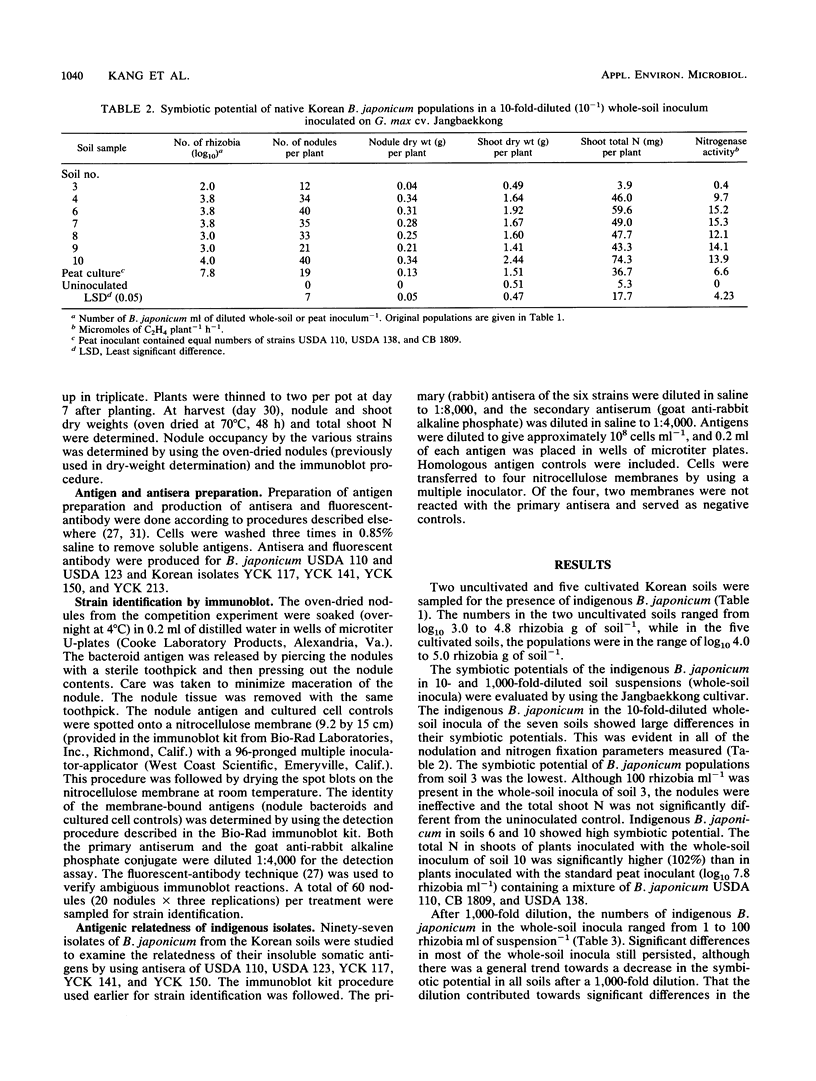
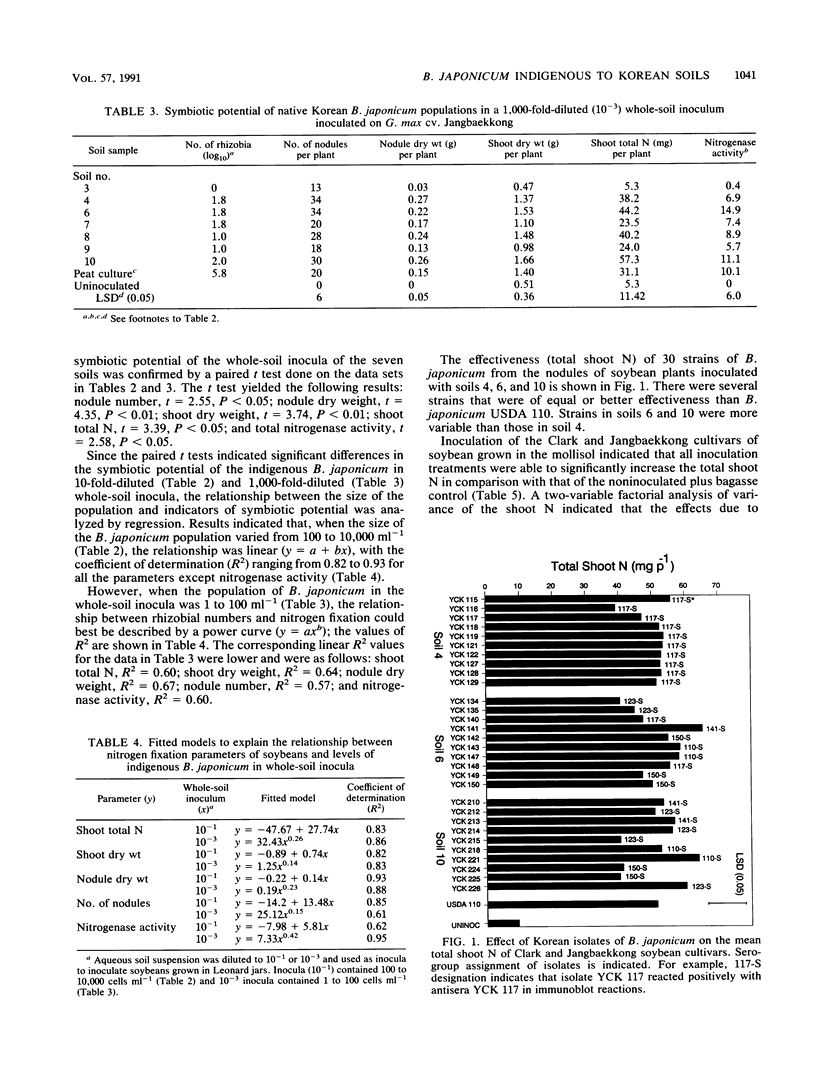
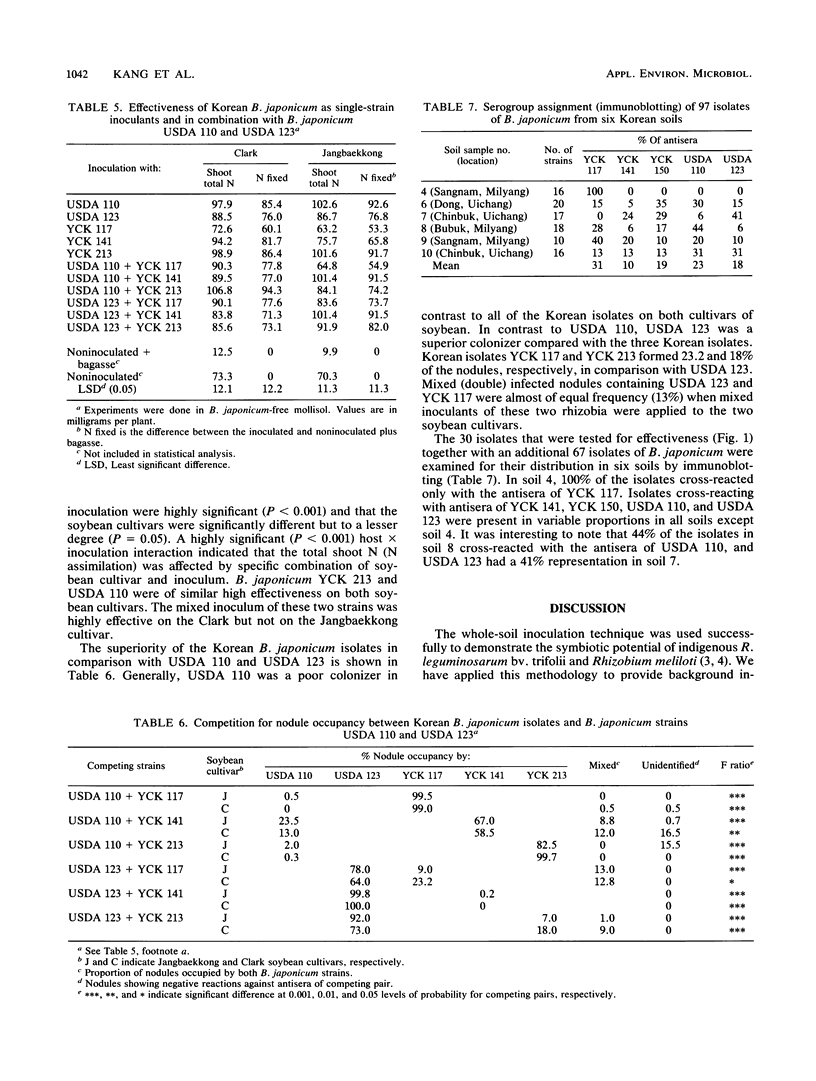
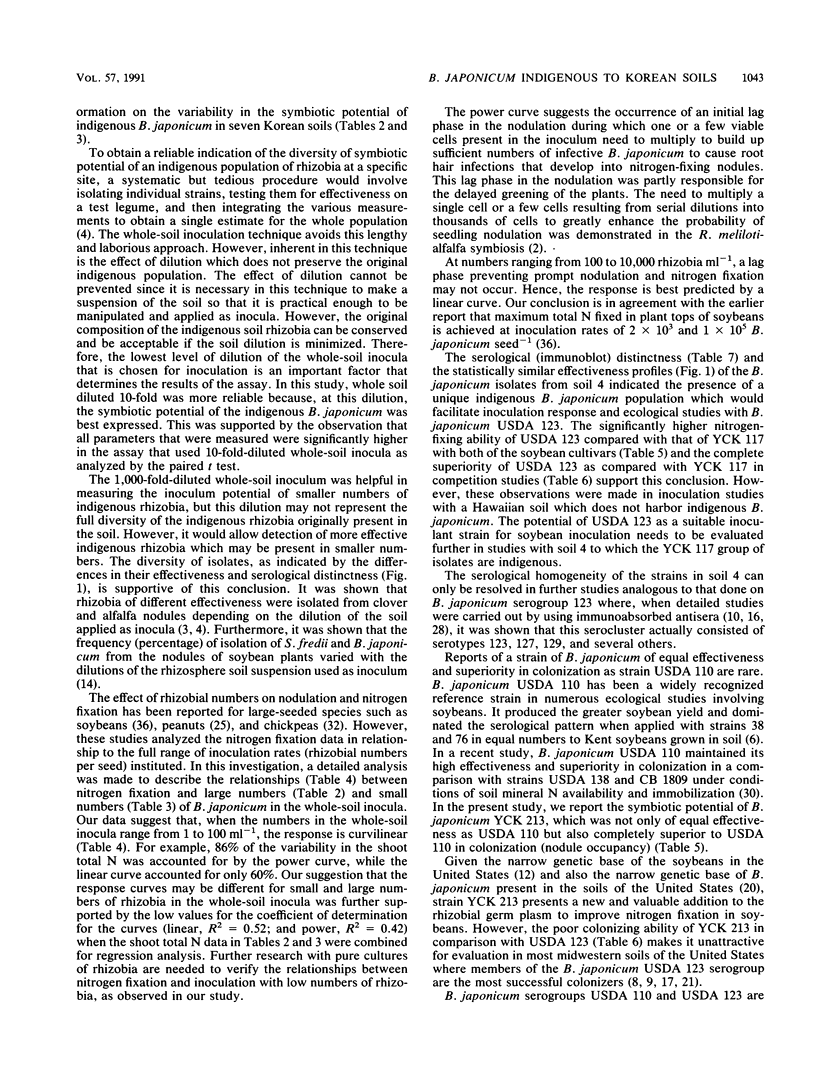
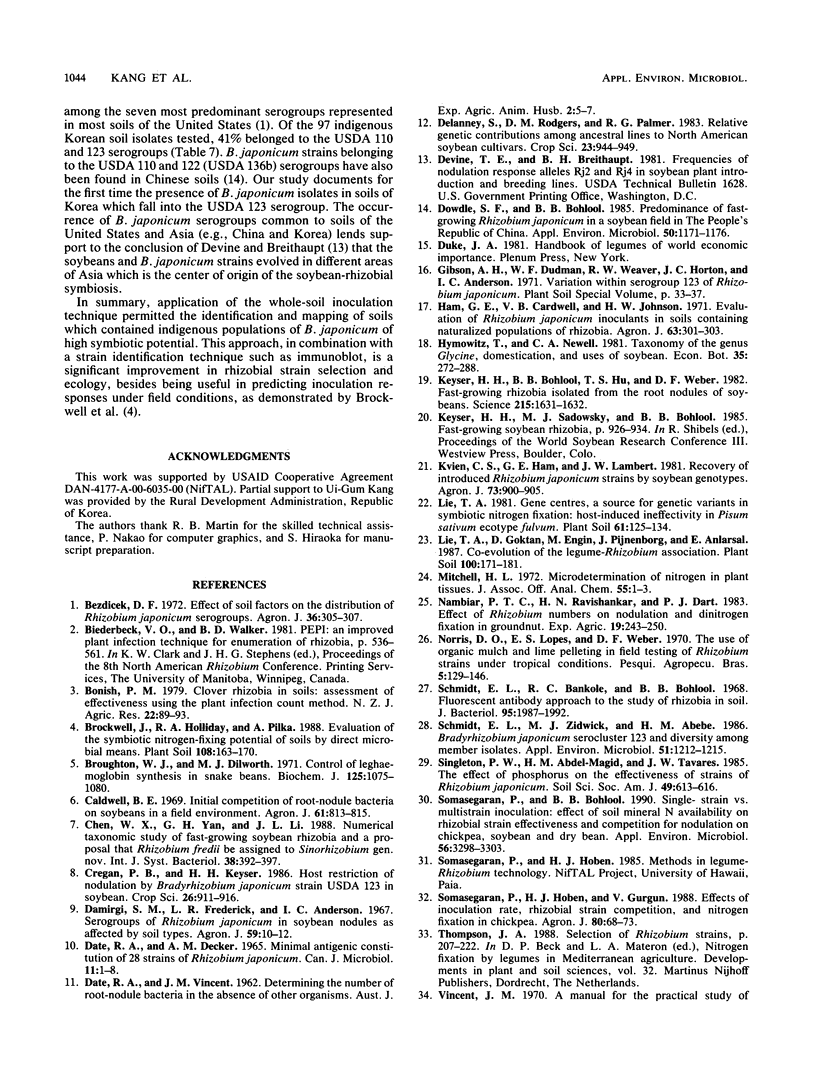
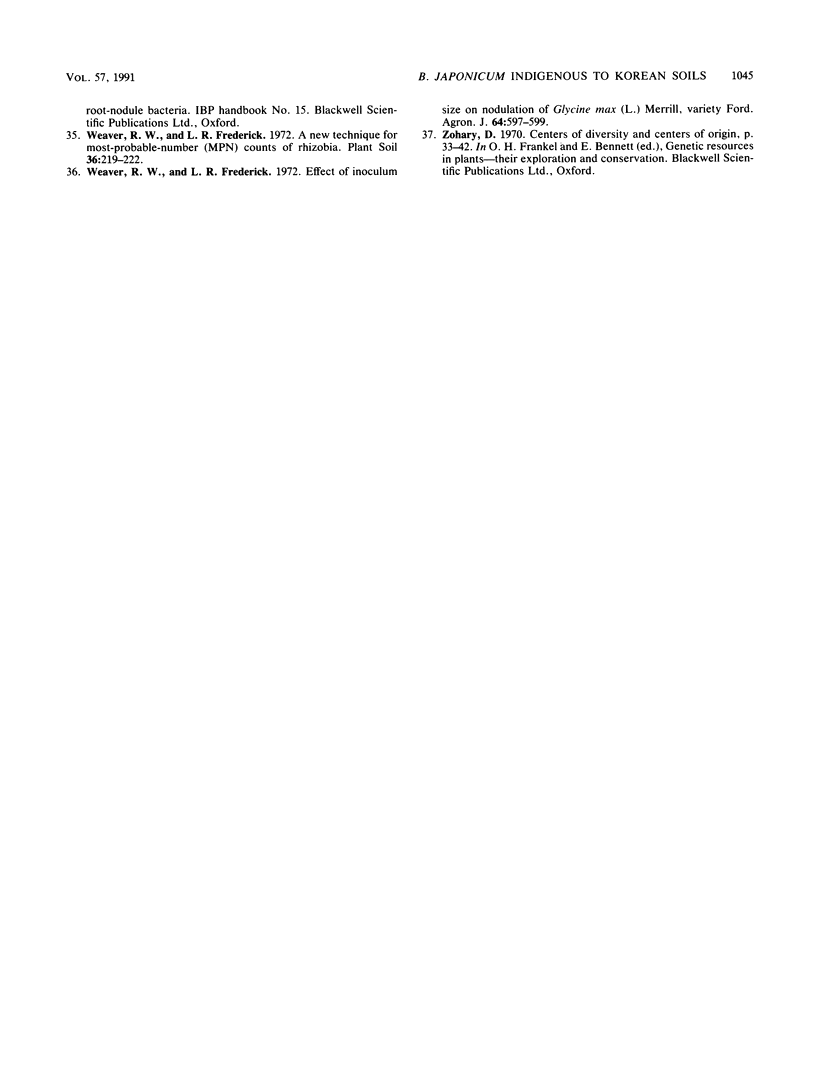
Selected References
These references are in PubMed. This may not be the complete list of references from this article.
- Broughton W. J., Dilworth M. J. Control of leghaemoglobin synthesis in snake beans. Biochem J. 1971 Dec;125(4):1075–1080. doi: 10.1042/bj1251075. [DOI] [PMC free article] [PubMed] [Google Scholar]
- DATE R. A., DECKER A. M. MINIMAL ANTIGENIC CONSTITUTION OF 28 STRAINS OF RHIZOBIUM JAPONICUM. Can J Microbiol. 1965 Feb;11:1–8. doi: 10.1139/m65-001. [DOI] [PubMed] [Google Scholar]
- Dowdle S. F., Bohlool B. B. Predominance of Fast-Growing Rhizobium japonicum in a Soybean Field in the People's Republic of China. Appl Environ Microbiol. 1985 Nov;50(5):1171–1176. doi: 10.1128/aem.50.5.1171-1176.1985. [DOI] [PMC free article] [PubMed] [Google Scholar]
- Keyser H. H., Bohlool B. B., Hu T. S., Weber D. F. Fast-growing rhizobia isolated from root nodules of soybean. Science. 1982 Mar 26;215(4540):1631–1632. doi: 10.1126/science.215.4540.1631. [DOI] [PubMed] [Google Scholar]
- Schmidt E. L., Bakole R. O., Bohlool B. B. Fluorescent-antibody approach to study of rhizobia in soil. J Bacteriol. 1968 Jun;95(6):1987–1992. doi: 10.1128/jb.95.6.1987-1992.1968. [DOI] [PMC free article] [PubMed] [Google Scholar]
- Schmidt E. L., Zidwick M. J., Abebe H. M. Bradyrhizobium japonicum Serocluster 123 and Diversity among Member Isolates. Appl Environ Microbiol. 1986 Jun;51(6):1212–1215. doi: 10.1128/aem.51.6.1212-1215.1986. [DOI] [PMC free article] [PubMed] [Google Scholar]
- Somasegaran P., Bohlool B. B. Single-Strain versus Multistrain Inoculation: Effect of Soil Mineral N Availability on Rhizobial Strain Effectiveness and Competition for Nodulation on Chick-Pea, Soybean, and Dry Bean. Appl Environ Microbiol. 1990 Nov;56(11):3298–3303. doi: 10.1128/aem.56.11.3298-3303.1990. [DOI] [PMC free article] [PubMed] [Google Scholar]


